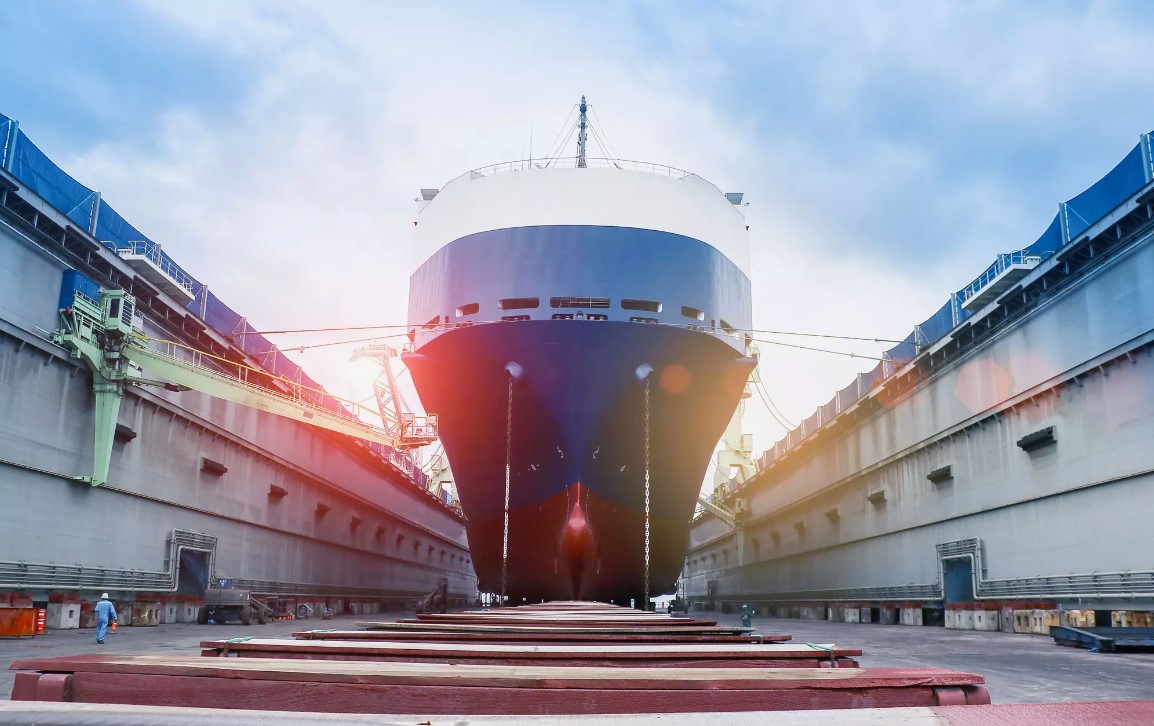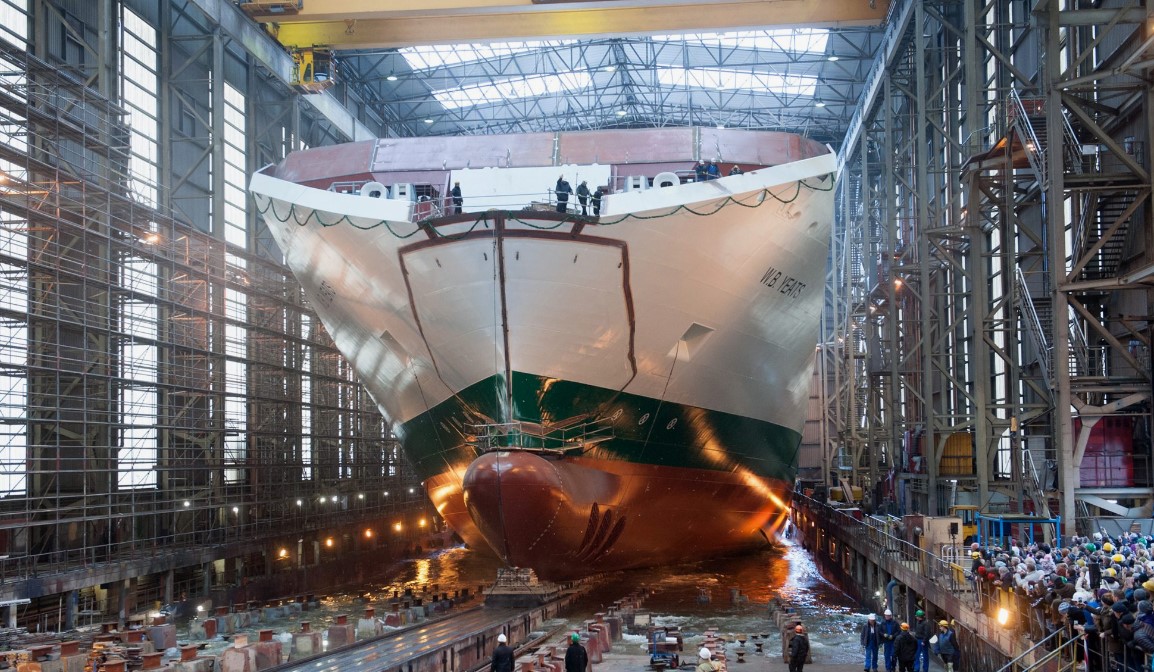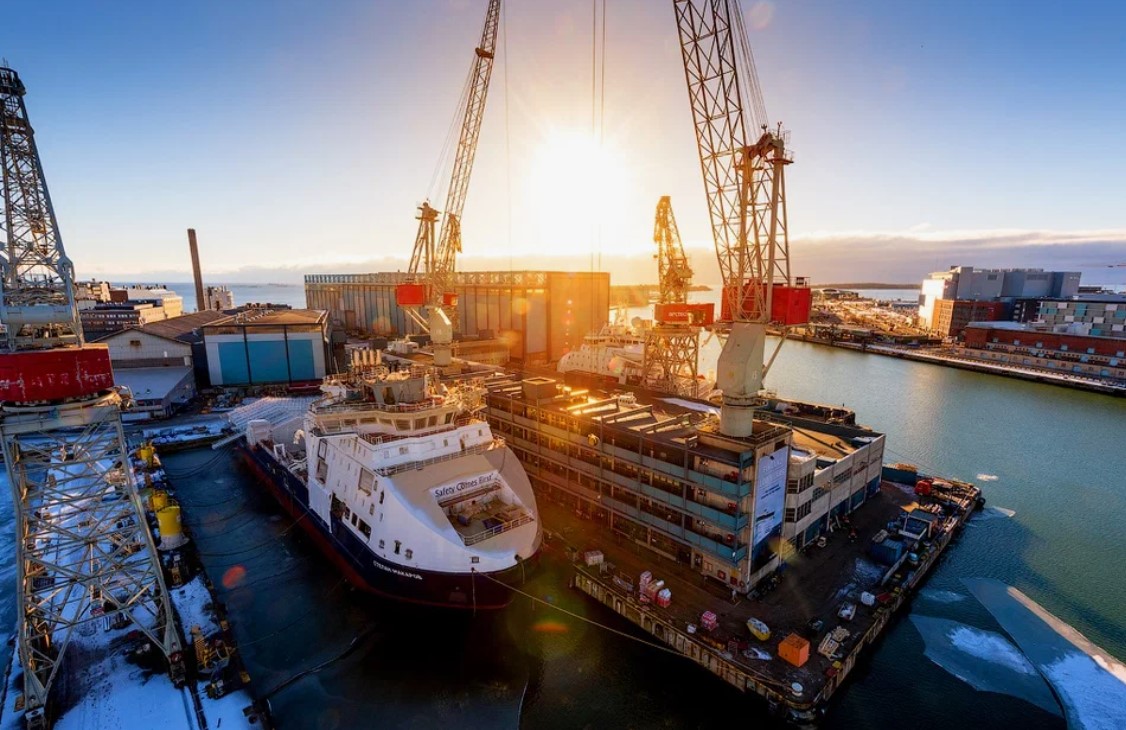As we stand on the brink of the Fourth Industrial Revolution, new technologies are poised to fundamentally reshape the maritime industry. The impact of these advancements is already visible in regions like Dubai, where marine engineering company Dubai is rapidly adapting to meet the demands of a changing global landscape. This transformation is driven by the need to address climate challenges and comply with the International Maritime Organization’s (IMO) stringent regulations on reducing harmful emissions from ships. The maritime industry is on the cusp of a revolution that will redefine global shipping forever.
The Merchant Fleet of 2030: A Glimpse into the Future
Experts and industry insiders have provided a vision of what the merchant fleet might look like in 2030. The forecast highlights the technologies and materials that will dominate the industry over the next decade. These innovations are not only expected to enhance the efficiency and sustainability of maritime operations but also to raise questions about the future role of human crew members on board, with the possibility of robotic replacements becoming a reality.
Environmental Imperatives Driving Change
The shift towards a greener maritime industry is no longer a choice but a necessity. The International Maritime Organization (IMO) has set ambitious targets for reducing greenhouse gas emissions from international shipping, aiming to cut emissions by at least 50% by 2050 compared to 2008 levels. This environmental imperative is accelerating the adoption of new technologies that promise to reduce the carbon footprint of the global fleet. The pressure to comply with these regulations is particularly intense in rapidly developing regions like the Middle East, where ports and shipyards are investing heavily in sustainable solutions to remain competitive on the global stage.
Hybrid Propulsion Systems: The New Standard
One of the most significant technological shifts in the maritime industry is the move towards hybrid propulsion systems. Nearly five years ago, Lloyd’s Register, in collaboration with the University of Southampton, published the “Global Marine Technology Trends 2030” (GMTT 2030) report, predicting that hybrid systems would eventually replace traditional diesel engines. This shift is largely motivated by the need to reduce carbon dioxide (CO2) and nitrogen oxide (NOx) emissions, as shipping companies strive to meet increasingly stringent environmental regulations.
Today, this prediction is becoming a reality. Norwegian cruise operator Hurtigruten LTD is leading the charge with the launch of two large hybrid cruise ships, the MS Roald Amundsen and the MS Frittjof Nansen. These 140-meter-long liners, equipped with hybrid engines, promise to offer silent voyages through the pristine landscapes of Antarctica and Svalbard, marking a new era in eco-friendly maritime travel.

Technological Advancements in Hybrid Systems
Hybrid propulsion systems are not just about combining traditional engines with electric motors; they involve a sophisticated integration of multiple energy sources, including batteries, fuel cells, and renewable energy. These systems allow ships to optimize energy consumption based on operational needs. For instance, during port operations or in environmentally sensitive areas, vessels can switch to battery power, drastically reducing emissions and noise pollution. As battery technology improves, with higher energy densities and faster charging times, the reliance on traditional fuel sources is expected to diminish further.
Moreover, the development of fuel cells, particularly hydrogen fuel cells, offers a promising avenue for zero-emission shipping. These cells convert hydrogen into electricity through a chemical reaction with oxygen, emitting only water vapor as a byproduct. This technology is still in its early stages but holds significant potential for the future of maritime propulsion.
Alternative Fuels: A New Energy Paradigm
The search for alternative fuels is another critical area of innovation in shipbuilding. As the industry seeks to move away from diesel engines, various alternative fuels are being researched and tested worldwide. The Green Maritime Methanol consortium, for example, is exploring the feasibility of installing methanol fuel systems on board ships. Their studies include nine vessels in the design stage, ranging in length from 40 to 160 meters and varying in tonnage and capacity.
Meanwhile, Viking Cruises is constructing the first cruise liner powered by liquid hydrogen. This 230-meter-long vessel will be capable of accommodating 900 passengers and 500 crew members, showcasing the potential of hydrogen as a clean and sustainable alternative to traditional marine fuels.
The Role of Biofuels and Synthetic Fuels
Beyond methanol and hydrogen, biofuels and synthetic fuels are also gaining traction as viable alternatives to traditional marine fuels. Biofuels, derived from organic matter such as plant oils or animal fats, offer a renewable and potentially carbon-neutral option. However, challenges remain in scaling up production to meet the demands of the global shipping industry and ensuring that biofuel production does not compete with food crops or lead to deforestation.
Synthetic fuels, produced from renewable electricity, water, and carbon dioxide, represent another promising alternative. These fuels, also known as electrofuels, can be designed to mimic the properties of conventional fuels, making them compatible with existing ship engines and infrastructure. The production of synthetic fuels is energy-intensive, but advancements in renewable energy technologies, such as solar and wind power, are expected to make this process more sustainable and cost-effective over time.
Nanotechnology and Self-Healing Materials: Enhancing Durability and Efficiency
The advent of new materials is another area where technology is set to revolutionize shipbuilding. Experts predict that future vessels will be constructed using advanced materials such as anti-corrosion-coated steel and new composites made from aluminum, glass, and carbon fiber. These materials are expected to reduce fuel consumption, improve hydrodynamic properties, and prevent hull corrosion, contributing to more efficient and longer-lasting ships.
Nanotechnology’s Impact on Shipbuilding
Nanotechnology, the manipulation of matter on an atomic or molecular scale, is poised to bring significant advancements to the materials used in shipbuilding. For example, nanocoatings can be applied to ship hulls to reduce friction and improve fuel efficiency. These coatings are designed to repel water, resist fouling by marine organisms, and enhance the durability of the vessel’s surface.
Nanotechnology also offers the potential for lightweight, high-strength materials that can replace traditional steel. These materials, such as carbon nanotubes and graphene, provide exceptional strength-to-weight ratios, allowing for the construction of lighter vessels without compromising structural integrity. Lighter ships require less fuel to operate, further contributing to the industry’s sustainability goals.

Self-Healing Materials: The Future of Maintenance
The Shipping 2030 report also anticipates the widespread use of self-healing materials in ship construction. These synthetic substances, which include polymers, elastomers, and even metals like aluminum alloys, have the remarkable ability to restore their structure at the atomic or molecular level when damaged. This innovation could dramatically reduce repair costs and extend the lifespan of maritime vessels.
Self-healing materials work by incorporating microcapsules filled with healing agents into the material’s matrix. When the material is damaged, these capsules break open, releasing the healing agents that react with the surrounding material to repair the damage. This technology is particularly valuable in harsh marine environments where corrosion, wear, and mechanical damage are common.
The Internet of Things (IoT): Connecting Ships to Shore
The Internet of Things (IoT) is another technology that is set to transform the maritime industry. By connecting onboard equipment to shore-based systems, IoT enables real-time data analysis that can improve vessel performance, safety, and efficiency. Ships equipped with IoT technology are faster, safer, and more economical, as they can continuously monitor and optimize their operations.
Despite the clear benefits, the adoption of IoT in the maritime industry has been somewhat slow. A 2018 study by Inmarsat Maritime found that 60% of shipping companies considered themselves “laggards” or “starters” in IoT technology adoption, with only 35% identifying as “leaders” and a mere 5% as “advanced” users. However, as the technology continues to evolve, its integration into shipbuilding and maritime operations is expected to accelerate.
Real-Time Monitoring and Predictive Maintenance
IoT technology enables the real-time monitoring of various ship systems, including engines, navigation equipment, and environmental controls. Sensors placed throughout the vessel collect data continuously, which is then transmitted to shore-based control centers for analysis. This real-time monitoring allows ship operators to identify potential issues before they escalate into costly failures, reducing downtime and improving operational efficiency.
Predictive maintenance, powered by IoT, is another game-changer for the maritime industry. By analyzing data from sensors, ship operators can predict when a component is likely to fail and schedule maintenance accordingly. This approach minimizes the risk of unexpected breakdowns and extends the life of critical equipment, ultimately reducing operational costs.
Artificial Intelligence (AI): The Future of Ship Control
Artificial Intelligence (AI) is perhaps the most sophisticated technology currently making its way into the maritime industry. AI-based ship control systems are evolving from existing dynamic positioning (DP) technology, offering advanced capabilities that can learn, analyze, and predict the future positions of vessels. These systems promise to enhance situational awareness for crews and reduce the risk of accidents.
As AI technology continues to develop, it will play an increasingly critical role in maritime operations. AI systems will eventually be able to analyze a ship’s course and maneuvers in real-time, making informed decisions that could surpass human capabilities in certain situations. However, the complete replacement of human crew members by AI-driven systems is still a distant prospect. Autonomous ships will require extensive infrastructure, including new terminals, service engineers, shore dispatch centers, and integration into existing power grids—a transformation that will take time.
AI-Driven Autonomy and Decision-Making
AI systems are already being used to enhance decision-making processes on ships. For example, AI can analyze vast amounts of data from weather forecasts, ocean currents, and traffic patterns to optimize route planning, reducing fuel consumption and avoiding hazards. AI can also assist in emergency situations, providing real-time recommendations to the crew based on the analysis of historical data and current conditions.
The ultimate goal of AI in the maritime industry is to achieve full autonomy, where ships can operate without human intervention. While fully autonomous ships are still in the experimental stage, significant progress is being made. For example, in 2018, the Norwegian vessel YaraBirkeland was launched as the world’s first fully electric and autonomous container ship. Although the vessel currently requires a crew for certain operations, the plan is to transition to full autonomy within the next few years.
The Human Factor: Will Seafarers Become Obsolete?
As new technologies continue to evolve, there is growing concern about the future role of human crew members in the maritime industry. Will seafarers be replaced entirely by robots and autonomous systems? The answer, for now, appears to be no. While automation and AI are likely to reduce the number of crew members required on board, the complete elimination of human involvement is still a long way off.
The transition to autonomous shipping will require significant infrastructure development, including the construction of new terminals, the training of shore-based service engineers, and the establishment of shore dispatch centers. Additionally, integrating autonomous ships into existing power grids and maritime traffic systems will pose substantial challenges. As a result, human expertise and oversight will remain essential for the foreseeable future.
Conclusion: The Future of Shipbuilding
The maritime industry is on the cusp of a technological revolution that will redefine shipbuilding and global shipping. Hybrid propulsion systems, alternative fuels, advanced materials, IoT, and AI are just a few of the innovations that will shape the industry in the coming decade. These technologies promise to make shipping more efficient, sustainable, and safe, but they also raise important questions about the future of work at sea. As we look ahead to 2030 and beyond, it is clear that the maritime industry will continue to evolve, driven by the need to address global challenges and embrace the opportunities presented by new technologies.
The Fourth Industrial Revolution will bring about unprecedented changes in the way ships are built, operated, and maintained. The integration of advanced technologies will not only reduce the environmental impact of shipping but also enhance the efficiency and safety of maritime operations. However, the human factor will continue to play a crucial role, ensuring that the transition to a more automated and sustainable future is smooth and successful. As the maritime industry navigates this new era, it will be essential to balance technological innovation with the preservation of human skills and knowledge, ensuring that the industry remains resilient and adaptable in the face of change.

Soccer lover, foodie, band member, hand letterer and HTML5 Guru. Operating at the crossroads of beauty and programing to craft an inspiring, compelling and authentic brand narrative. My opinions belong to nobody but myself.
